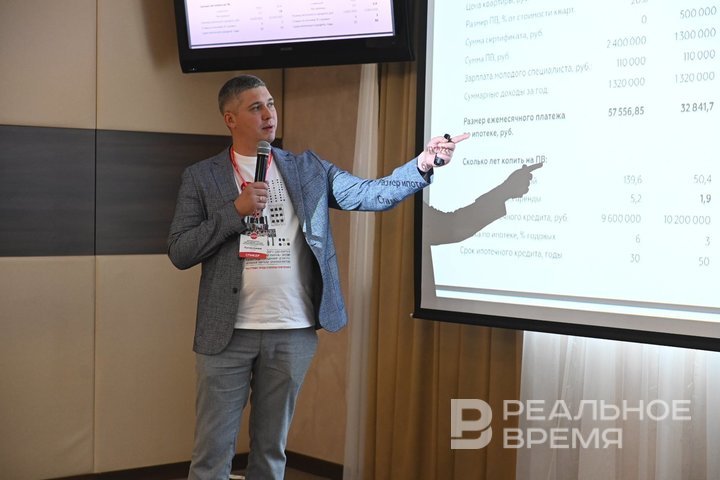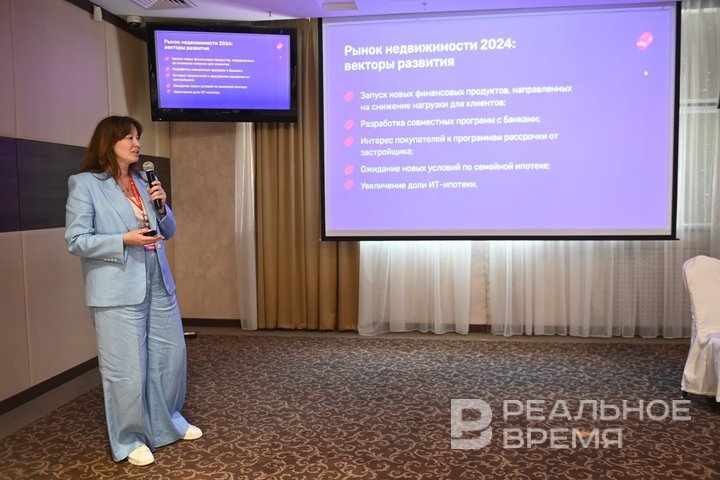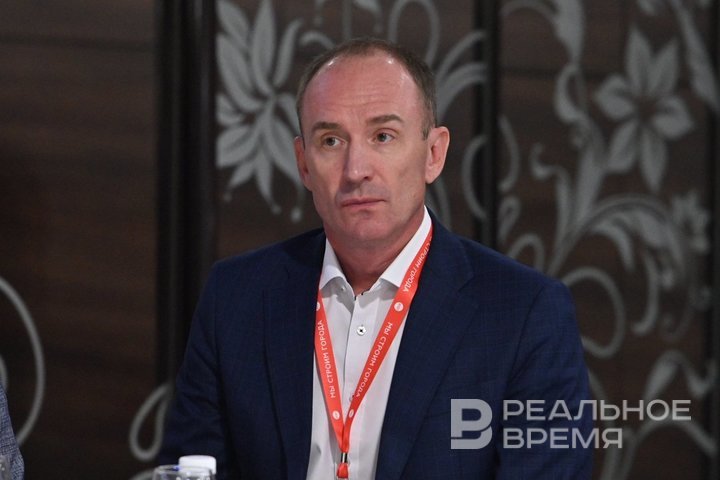‘The market forced it’: developers began to subsidise loan rates for home buyers
While there is no widespread preferential mortgage, and family mortgages are not available to everyone, developers and banks are launching their own programmes

Widespread preferential mortgages have not been available in Russia since Jiuly, and even extending te family mortgage will not radically solve the problem due to its limitations. “In June, developers fulfilled the plan by almost 200%, but within a week and a half in July, many have experienced a negative situation — almost no clients in their offices.” This is how developers are describing the decline in sales of new buildings. According to them, they are forced to create joint programmes with banks — to subsidise rates, instalment plans and so on. The Central Bank is dissatisfied, but “without this, we will get a market decline or stop,” people from the industry are saying.
Family mortgage extended in Russia
Real estate market played discussed how the mortgage market was doing without government support at a business breakfast in Kazan on 10 July. Shortly before it began, it became known about the extension of family mortgages in Russia. The news was greeted with enthusiasm, but it was noted there was no as massive support for families as before. Parents of children under six years of age inclusive, as well as disabled children, will be able to take out a loan at a rate of no more than 6%. And only for the construction of a private house. You can buy an apartment only in small towns with a population of up to 50,000 people and regions with little construction or those with their own development programmes.
“If you look at the number of children under 18 years of age in the republic and compare it with the number of children under 6, this is the main difference from the previous programme, then there are approximately 3-4 times fewer such families today. This also needs to be taken into account,” said Aygul Latypova, executive director of Ak Bars Dom.

The loan limit in the programme will be 12 million rubles for Moscow, Saint Petersburg and their regions and 6 million for the other regions. You can combine a preferential loan with market programmes (for loans above 6-12 million, interest will be charged at the market rate), in this case, loans are limited to 30 million and 15 million rubles in big and remote regions, respectively.
“With a 21% rate, mortgages and home purchases have become unaffordable”
Only a limited category of citizens will be able to take advantage of a family mortgage. Therefore, in order to keep the market of new buildings from falling, an alternative to the cancelled mass preferential programmes are needed, people in the industry are saying.
“We have come to the point that mortgages began to live according to market conditions. Now the rates are equal to 21%, and there is no need to say that the market is doing well. If we compare monthly payments under preferential programmes and the current rate of 21%, the amounts have tripled. Borrowers who are now taking out a mortgage pay about 95% of their payment only as interest to the bank. Therefore, I consider such rates to be an obstacle; due to them, mortgages and home buying have become unaffordable,” said Rustam Azizov, director of mortgage sales and implementation of financial instruments at A101 Group of Companies.
The developer gave an example from Moscow where average loan size for an apartment for 12 million rubles is 10 million. At the current level of market mortgage rates of 21-23%, the monthly payment exceeds 180,000 rubles. “At the same time, only 2,500-3,000 rubles from this amount go to repay the loan itself, and the rest goes to interest repayment. Thus, the amount of overpayment for an apartment worth 12 million rubles for the entire loan repayment period is more than 33 million rubles,” the speaker explained.
To replace the public preferential programmes, developers and banks are offer their own programmes: subsidised rates, instalment plans, combo mortgages and so on. In particular, once can take out a mortgage at 8% a year now. The rate for the first few years will be subsidised by the developer. Of course, the apartment in this case will cost more.

“In general, we probably need to somehow restructure our thinking and try to work without government programmes. It is clear that if we completely remove state programmes now, everything may stop altogether, so they are making some restrictions — now for a family mortgage, they demand the child to be under 6 and so on. But somehow we all worked before the pandemic, and it still worked out. We need it to make it work out now,” urged Anatoly Norshtein, founder of Metr.Club mortgage aggregator.
“The regulator encourages us to make discounts, but this is not always reciprical”
As Realnoe Vremya already reported, a month ago experts predicted a serious decline in sales in the new real estate market — up to 40%. The first days of July and the cancellation of preferential programmes partially confirmed these fears.
“In June, developers fulfilled the plan by almost 200%, and in for one and a half weeks in July, many people had a negative situation, there were almost no clients in the offices,” noted Rustam Azizov. “That’s why banks and developers are now offering some alternative options to reduce the market rate at least in the short term. Let’s hope that the key rate will decrease in 2025-2026 and mortgages with high rates can be refinanced,” he noted.
The Central Bank is closely monitoring the development of the mortgage market and the work of banks with developers to create their own home buying programmes. “The regulator calls them schemes, we still call them a method of purchase: for the developer, it is a method of implementation, for the client, it is a more or less accessible method of purchase,” the developers object. The Central Bank expressed its dissatisfaction calling on credit institutions and developers to better offer discounts to clients. But the industry has noticed that this is not always possible.
“If the Central Bank begins to somehow limit the programmes from developers, this will be quite problematic. The regulator is encouraging us to make discounts, but, unfortunately, this is not always reciprocal. If my discount is 20%, this will not lead to a monthly payment where we will subsidise this 20% according to the programmes. In other words, the payment will still be significantly higher,” explained Aygul Latypova.

The Central Bank is working to create and implement a mortgage standard in Russia. However, while it is not there, all attempts to maintain the development pace of the mortgage market cannot be cancelled, the industry is convinced: “This is wrong, simply because then there will be no alternatives or opportunities for market development. Imagine if the same subsidised rates from the developer did not exist now. Let's be honest, our monthly payments have tripled according to the market rate, but the real incomes of the population have not increased since q July. What are we talking about then?”
“Mortgage was born in Ancient Greece in the 6th century BC, lived for 2,600 years and will definitely not die after 1 July,” Arkady Bocharnikov, head of the mortgage lending department of Ak Bars Bank, was positive.
The speaker provided general data on the issue of mortgages in Russia. Recent months have shown that about 2 million families annually improve their living conditions through mortgages. The ratio of mortgage debt has, of course, increased, the speaker admitted, but at the same time, our indicators are still lower than in the USA and Germany. Russians have taken out a mortgage for 18 trillion rubles, which is 11% of GDP.
“We have the potential here, we can increase the mortgage debt of the population 4 times, and the economy will do great.” Therefore, I would not say that after 1 July there will be no mortgages. In terms of big numbers, we still have to grow and grow,” the expert believes.
In terms of housing provision, the figure reached 25 square meters per resident of Russia ,and an annual increase is approximately a square metre. We haven’t yet reached the level of other countries; we can double the amount of housing owned by the population, the speaker added. “It should also be taken into account that it is the size of all the Khrushchyov blocks of flats built in the 1960s and 1950s , which, of course, need to be updated.”

“Developers are now in such conditions that we do not determine how much we can sell”
Arkady Bocharnikov believes that with the cancellationf of preferential programs, alternative ones will be actively developed — from banks and developers. In his opinion, they will be especially in demand in the next years.
“We launched a mortgage at 8% for a year or two, and at the moment this is salvation. But it also requires costs from the developer. With such market rates, despite all the standards and prohibitions, the market still forced us to create joint programmes with banks. Without this, unfortunately, we will either have a market decline or a stop. Developers are now in such conditions that we do not determine how much we can sell. We have estimated financing, our sales are strictly regulated. Therefore, banks are interested, and we are interested in creating mechanisms to make housing affordable,” Aygul Latypova emphasised.
In the next month, all major players in the mortgage market will present their programmes to support demand for primary housing, says Rustam Azizov: “Banks like developer are also interested in maintaining the pace of house sales and, as a result, the issue of mortgages. Such loans have an extremely low level of overdue debt — 0.02%. In addition, mortgage borrowers have a fairly high LTV rate, that is, readiness to use other banking services.”
According to Anatoly Norshtein, market mortgage rates will not decrease to the numbers that are acceptable for most apartment buyers until mid-2025. “The mortgage market will survive but through special joint programmes with developersas well as programs that were not previously in high demand,” the expert believes.

The future demand for housing in the next two months was largely met in June, so the sales figures of July and even August will be irrelevant; the real situation will not be clear until September, experts say.
“Until this moment, the market may see a transition to targeted support for certain categories of citizens (doctors, teachers, employees of core enterprises), which can more effectively resolve important government issues. In addition, it seems appropriate to extend government support for mortgages for young families in order to encourage young people to start families and have children at a younger age, says Rustam Azizov.
One of the options, in his opinion, could be the Youth Mortgage that can be extended to young professionals under 30. It can be implemented within a new Youth of Russia national project. The maximum loan term in the programme can be increased, up to 50 years, this will help reduce the monthly payment. The interest rate in the programme taking into account subsidies from the state can be no more than 3%. At the same time, it is recommended to set the maximum loan amount at 15 million rubles for Moscow, Saint Petersburg and their regions and at 12 million rubles for the other regions.